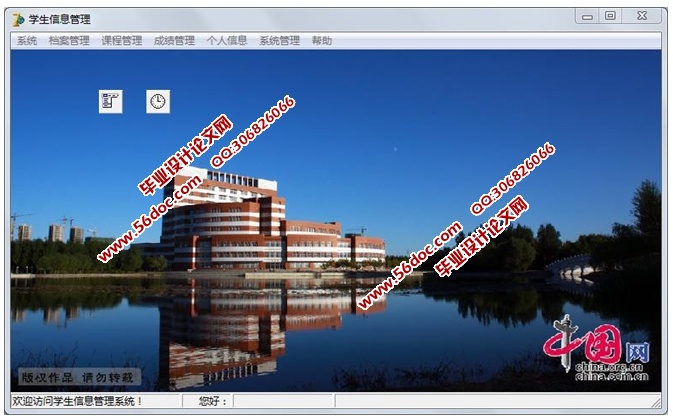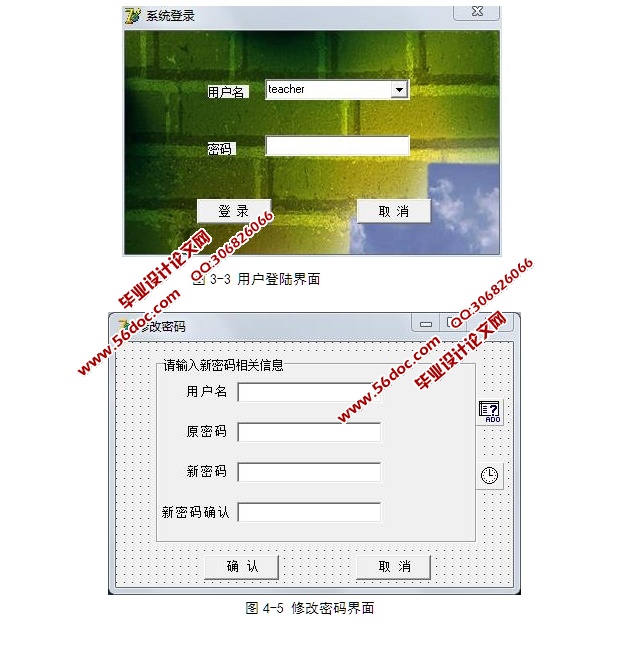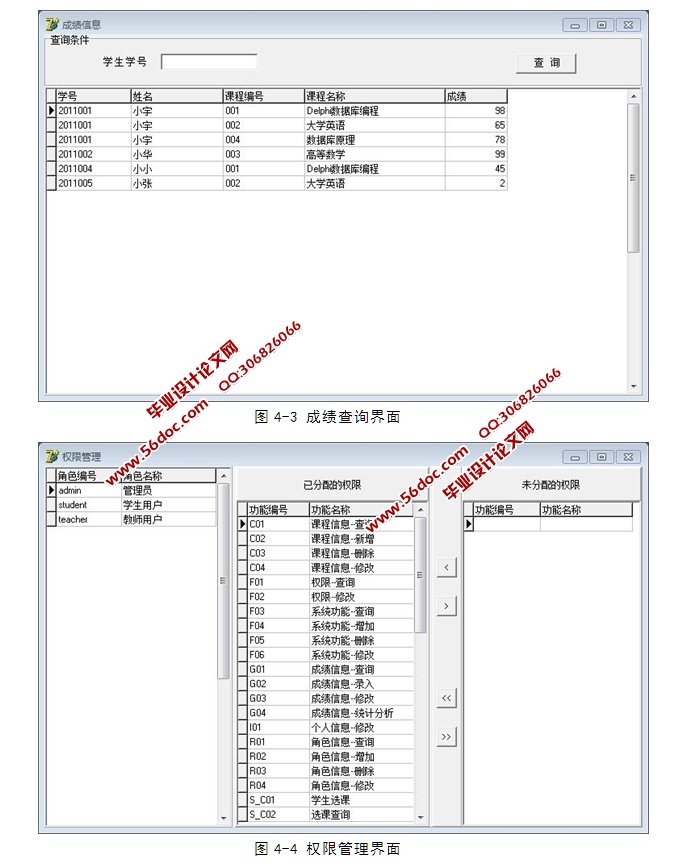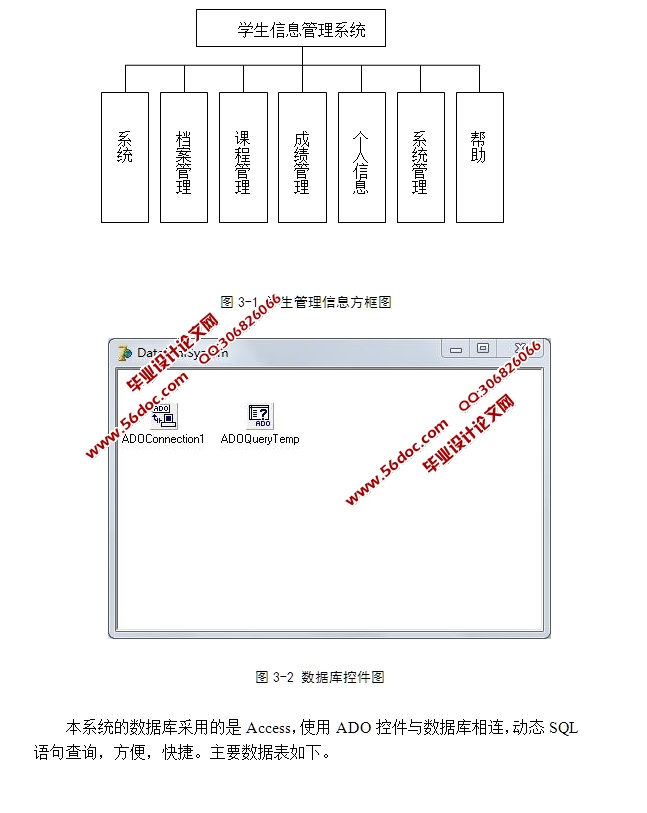学生管理系统的设计与实现(Delphi,Access)
来源:56doc.com 资料编号:5D16162 资料等级:★★★★★ %E8%B5%84%E6%96%99%E7%BC%96%E5%8F%B7%EF%BC%9A5D16162
资料以网页介绍的为准,下载后不会有水印.资料仅供学习参考之用. 密 保 惠 帮助
资料介绍
学生管理系统的设计与实现(Delphi,Access)(课题申报表,任务书,开题报告,中期检查表,外文翻译,论文16300字,程序,Access数据库,答辩PPT)
摘 要
近几年,高等教育事业得到了突飞猛进的发展,给管理系统带来了很多新的问题,如学生扩招、推行素质教育、个性教育、培养创新精神和实践能力、实行学分制等,使得学生系统管理工作量成倍增加,教学资源相对紧张,这些都给管理工作提出了前所未有的挑战。因此要用先进的理念和开发技术开发新一代的学生管理系统,以满足高教改革与发展的需要。
本文通过论述学生管理系统的设计、开发、应用过程,阐明了学生管理系统在促进教育深化改革和提高管理者工作效率方面所起到的积极作用,提出了学生管理系统在实际应用过程中应该注意的已经解决的和尚未解决的问题,为学生管理系统的开发和广泛使用提供了理论上和实践的依据。
本文描述的是一个基于Delphi7.0的学生管理系统,从功能上可以满足学生信息管理的要求。
关键词:Delphi;学生管理系统;设计;开发
Abstract
Latin American ports are continuously growing, prior research were focused on the Panama Canal, but nowadays South American ports which are the gateway to American and Asia become important and are the new focus of port investigators, for this reason South American ports compete, promoting their strategic location and facilities for the arrival of large ships, This paper aims to apply tools like Delphi and SWOT analysis for strategic planning of the Port of Manta. SWOT Analysis quantitative model and expert judgment Delphi Panel which consists of practical and theoretical experts who have knowledge of the reality of the Port of Manta and researchers in logistics and international shipping. The strategic proposal for the specific case of the Port Manta is based on offensive strategies which are the ideal position for the port that lead to rapid growth in the maritime market.
Keywords: port; multimodal transport; logistics; SWOT analysis; Delphi
主要内容:
主要研究基于Delphi的学生管理系统的设计与实现,利用Delphi提供的集成开发环境及各种组件,尤其对数据库的支持完成对数据库的各种操作,达到对学生系统管理的目的。
基本要求:
1、学生个人信息查询:包括:学号、姓名、性别、院系、年龄等。
2、课程信息查询:输入课程名称即可查询到课程编号及学分。
3、成绩信息查询:输入学生学号即可查询到各科成绩。
4、权限管理:添加或删除某个角色的使用权限。

目 录
第1章 概 述 1
1.1 研究背景 1
1.2 课题来源 1
1.3 国内外发展状况 2
1.4 课题研究内容 2
第2章 管理信息系统基础 3
2.1 管理信息系统概述 3
2.2 管理信息系统的特点 6
2.3 管理信息系统的开发 8
2.4 本章小结 13
第3章 学生管理系统总体分析设计 14
3.1 总体设计原则 14
3.2 数据库设计 15
3.3 界面开发 17
3.4 本章小结 19
第4章 系统详细设计 20
4.1 登录验证功能 20
4.2 查询功能 23
4.3 系统维护功能 28
4.4 本章小结 32
结 论 33
参考文献 34
致 谢 35
|













